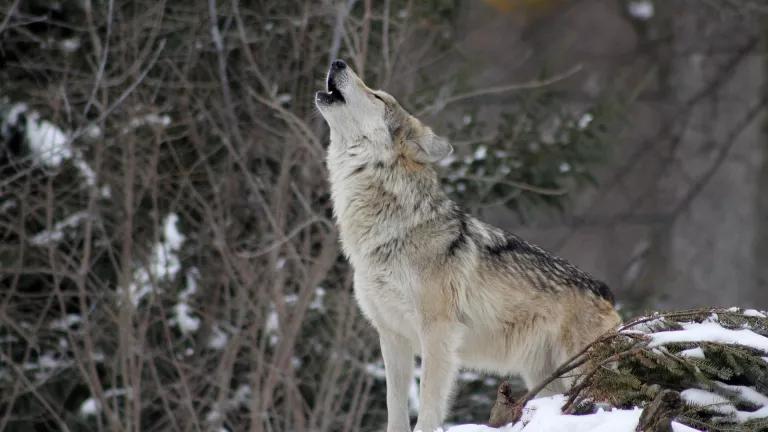
Friday, May 15th is Endangered Species Day, a time to cherish the world's biodiversity and to celebrate the many conservation successes of the past fifty years. It’s also a time to recognize that fighting for these species is more important than ever, with a looming biodiversity crisis compounded by the Trump administration’s unprecedented attacks on our wildlife.
Just over a year ago, the Intergovernmental Science-Policy Platform on Biodiversity and Ecosystem Services (IPBES) issued a landmark report, warning that over a million species are at risk of extinction in the coming decades if we don't take swift action. A year later, little has changed. Wildlife are still in decline, in no small part due to the Trump administration's efforts to decrease protections for imperiled species at this crucial time.

© Clay Bolt/claybolt.com
Most notably in the past year, the Trump administration has weakened protections under the very statute that lends its name to this day: the Endangered Species Act (ESA). The ESA is the strongest wildlife protection statute in the world, and a wildly popular one at that. It's responsible for many of the greatest conservation successes in the U.S., including the bald eagle, grey wolf, and countless other iconic species saved from the brink of extinction.
But in a series of regulatory gifts to the oil and gas, logging, and other extractive industries that see the ESA as nothing more than a pothole on the road to profit, the Trump administration has weakened central pillars of the Act's protections. The changes allow economic considerations to influence what should be science-based listing decisions, lift automatic protections for threatened species, preclude consideration of climate change impacts, and otherwise make it more difficult to list and protect imperiled species. They will hasten the extinction of species and magnify the biodiversity crisis we’re already facing. NRDC is currently in court challenging these unlawful rollbacks.
This isn't the Trump administration's only attack on wildlife. To name a few others, the administration has:
- Changed a 40-year interpretation of the Migratory Bird Treaty Act to allow "incidental" killing of birds—nearly a third of which have disappeared in the past 50 years
- Loosened fishing regulations designed to protect bluefin tuna and other increasingly rare fish
- Weakened protections for the threatened delta smelt
- Approved (or proposed approving) continued use of ecologically devastating pesticides, like monarch-killing glyphosate and bee-toxic neonicotinoids.

Amid these seemingly insurmountable challenges, however, there are glimmers of hope. NRDC recently won protections for the critically endangered vaquita porpoise—only about 10 of which remain in the wild. Last year, we reached a settlement requiring the Fish and Wildlife Service to take steps to protect the grassland habitat of the endangered rusty patched bumble bee. And states are stepping up to protect wildlife in the absence of federal leadership. New York in December passed a bill to ban trade in species designated as “vulnerable,” including giraffe parts, in a major victory to address wildlife trade, a huge driver of biodiversity loss. New Jersey and New York are also moving toward restricting uses of neonicotinoid pesticides, which are harming bees, birds, and other wildlife.
This Endangered Species Day, appreciate the vast biodiversity we still enjoy—but understand that the very existence of many species is more tenuous than ever. NRDC will continue to fight tooth and nail to protect these cherished species. And we won’t stop until their futures are secure.

